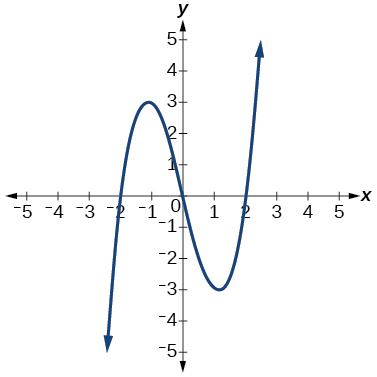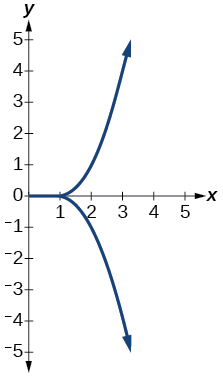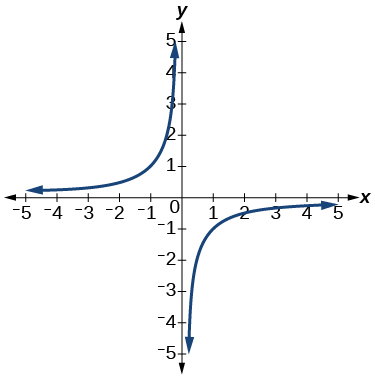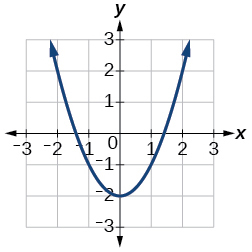3.1E : Fonctions et notation des fonctions (exercices)
- Page ID
- 195520
Pour les exercices suivants, déterminez si la relation est une fonction.
1. \(\{(a, b),(c, d),(e, d)\}\)
2. \ {(5,2), (6,1), (6,2), (4,8) \} \)
3. \(y^{2}+4=x,\)pour\(x\) la variable indépendante et\(y\) la variable dépendante
4. Le graphique de la Figure 1 est-il une fonction ?

Pour les exercices suivants, évaluez la fonction aux valeurs indiquées :
\[\begin{array}{lllll} f(-3) ; & f(2) ; & f(-a) ; & -f(a) ; & f(a+h) .\end{array} \nonumber\]
5. \(f(x)=-2 x^{2}+3 x\)
6. \(f(x)=2|3 x-1|\)
Pour les exercices suivants, déterminez si les fonctions sont individuelles.
7. \(f(x)=-3 x+5\)
8. \(f(x)=\mid x-3\)
Pour les exercices suivants, utilisez le test de la ligne verticale pour déterminer si la relation dont le graphe est fourni est une fonction.
9.

10.

11.

Pour les exercices suivants, tracez les fonctions.
12. \(f(x)=\mid x+1\)
13. \(f(x)=x^{2}-2\)
Pour les exercices suivants, utilisez la Figure 2 pour approximer les valeurs.

14. \(f(2)\)
15. \(f(-2)\)
16. Si\(f(x)=-2,\) alors résolvez pour\(x\).
17. Si\(f(x)=1,\) alors résolvez pour\(x\).
Pour les exercices suivants, utilisez la fonction\(h(t)=-16 t^{2}+80 t\) pour trouver les valeurs sous leur forme la plus simple.
18. \(\frac{h(2)-h(1)}{2-1}\)
19. \(\frac{h(a)-h(1)}{a-1}\)


